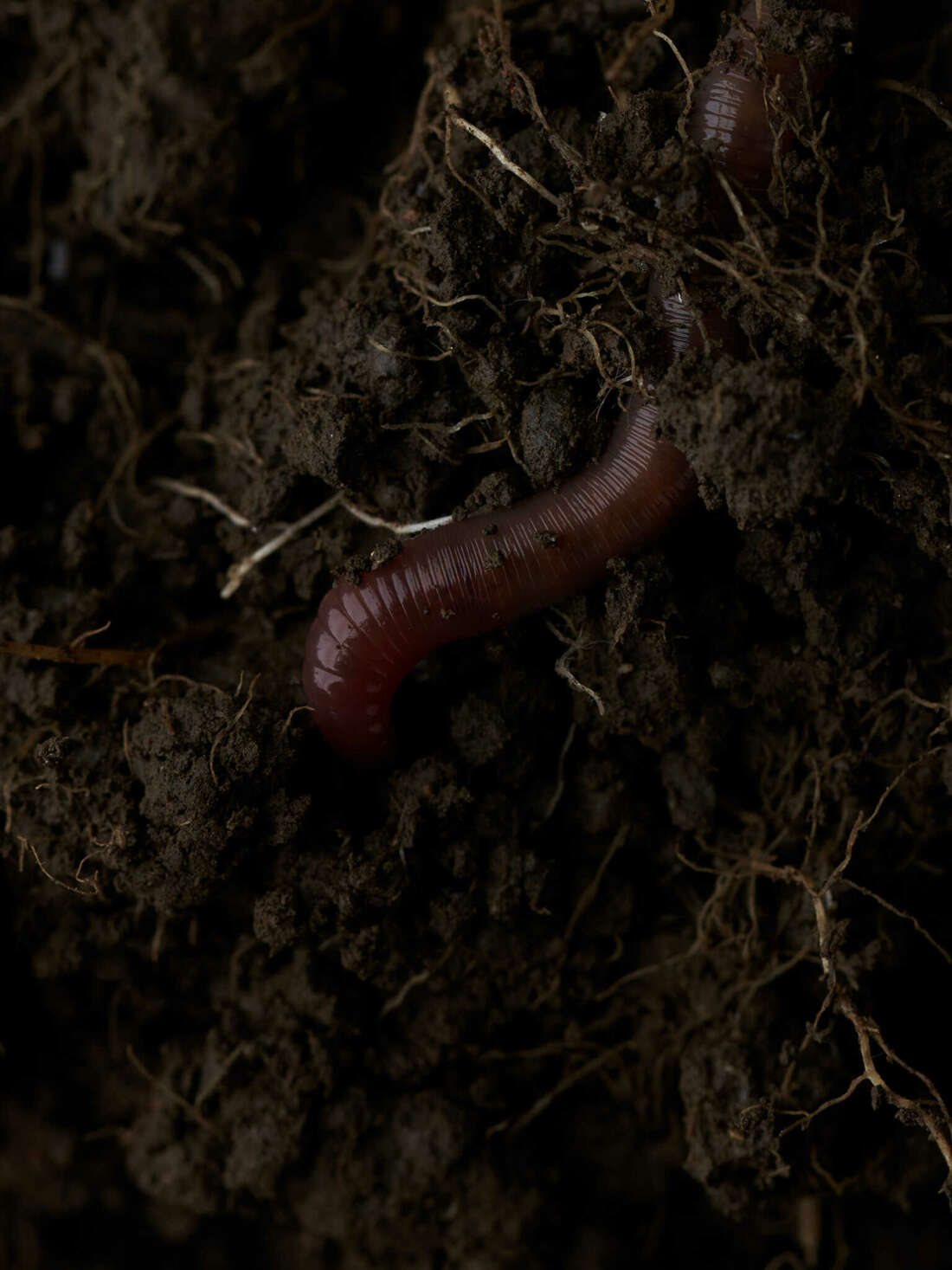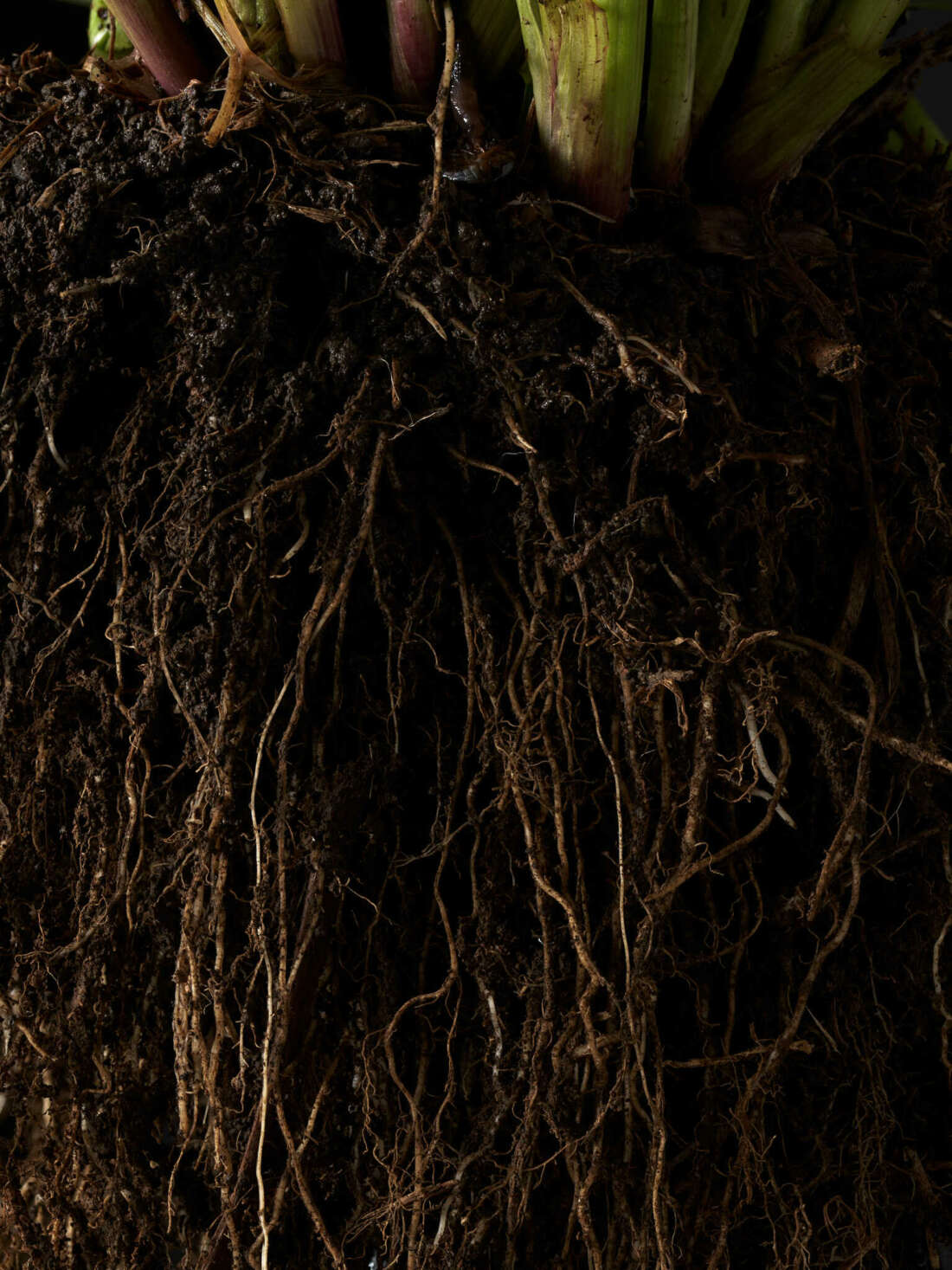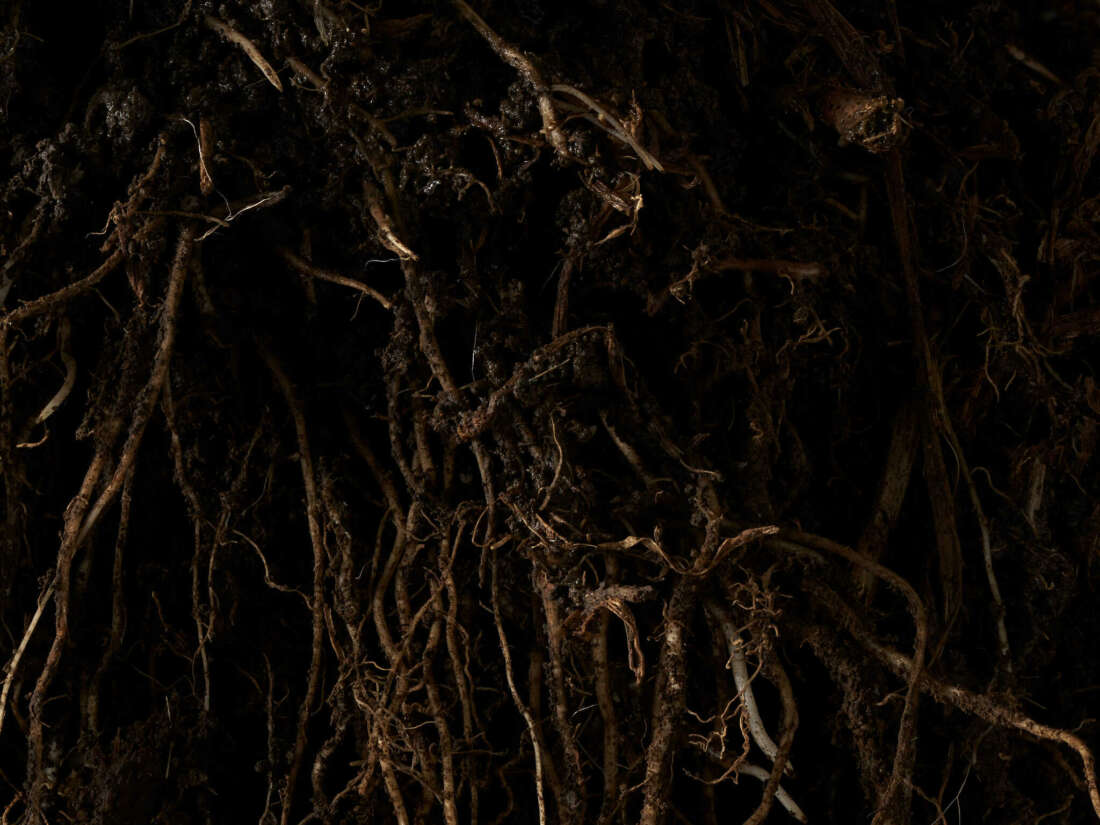Category — Features

Soil is Sacred
By Nick Stringer
Scientists have only just begun to understand the universe of life beneath our feet. But the sacredness of the soil was known to ancient cultures and communities.
Scientists have only just begun to understand the universe of life beneath our feet. But the sacredness of the soil was known to ancient cultures and communities. There are seams of rich black soil in the Amazon where tribes would place food scraps on the embers of the fire and bury it. There is a saying in India that there are 33 million gods on a cow, because its milk nourishes millions and its manure creates healthy soil.
Soil is sacred, and it is also unique to its location. The concept of ‘terroir’ in winemaking refers to the distinctive flavours of a particular place. Central Otago pinot noir tastes different to Burgundy pinot noir. Beyond winemaking differences and climatic differences, most will attribute these characteristic differences to ‘terroir’. The schist-strewn glacial valleys of Central Otago are very different to the sedimentary limestone soils of Burgundy, which many millions of years ago were beneath the ocean.
The nuances of winemaking enables our taste buds to understand that different soils do different things to the same variety of grape. This is reflected in other crafts too. For example, the authentic pizza Napoletana can only be made with San Marzano and Pomodorino del Vesuvio tomatoes, both of which must be grown in the volcanic soils around Mount Vesuvius.
People may dismiss this culinary passion as excessively patriotic or localist. But it’s through our taste buds that we began to understand the importance of the soil food web in creating very special plants from very special soil.
Soil Systems
Until the early 1980s we didn’t yet have a scientific explanation for how soil worked. It was either good or not. If it wasn’t good, either leave that paddock alone for a while, or add synthetic fertiliser. Unfortunately, those inorganic fertilisers are usually salt-based and derived from petrochemicals. The soil might get more ‘nitrogen’, but the soil food web is getting destroyed.
But no one knew that, because no one really understood the soil food web.
It was Dr Elaine Ingham, American microbiologist and soil biology researcher, who first began to devotedly investigate the soil food web. Other scientists knew that within soil there were bacteria and fungi. But no one had an explanation for what these organisms were doing – most presumed they did nothing.
This didn’t sit right with Dr Ingham as she began her PhD in 1978. Bacteria have been on earth for 4 billion years, fungi for 3.5 billion. Dr Ingham was asking: “Why would nature allow any organism to hang around for 4 billion years if they’re not doing anything? What are these organisms doing on the planet now?”
Thanks to her persistence and curiosity we now know that there is not just bacteria and fungi within the soil, but a circular ecosystem of life: the soil food web.
It is made up of bacteria and fungi at the first level, which decompose bedrock, sand, silt and clay to extract their nutrients.
Then come the protozoa, nematodes and arthropods. Those sound like a bit of heavy jargon to the non-scientists, but are easy to understand once you put them in context. Protozoa are single-celled organisms that usually feed on bacteria or other protozoa. Nematodes are tiny worm-like organisms that burrow around the soil and distribute fungi and bacteria along the way. Arthropods are small invertebrate animals sometimes visible to the naked eye, like spiders and insects. Ultimately, these arthropods are eaten by birds or other animals, linking the soil food web with the more visible food web above ground.
As the bacteria and fungi are consumed, they are excreted. That poop contains all the raw nutrients of bedrock, sand, silt or clay, but now in a soluble and plant-available form.
According to Dr Ingham: “The nutrient-cycling system was in the soil, in the ground, 3 billion years before rooted plants ever came on the scene. Mother nature decided to grow plants because they could use those nutrients that were cycling in the soil. So now the plant has a delivery service right to its root system, kind of like when you call up for pizza.”
Plants have evolved to thrive off the soil food web. Humans have evolved to thrive off plants. But when we spray glyphosate, till, or use synthetic fertiliser we destroy the soil food web and force it to restart. Yet at the same time we expect the plants to remain healthy. To put it simply, they won’t. Because they can no longer get the nutrients from the soil in a plant-available form — the micro-manure of the soil food web.
So, the more life beneath the soil, the healthier the plants above the soil will be because they have greater access to all their nutrient needs.
However, if links in the food web are missing, plants begin to struggle and are more susceptible to disease. The same applies to humans, if we removed plants from our diet and just ate cheese we would struggle and get sick. Some of us might try to trudge on in denial. But the ultimate result would not be pretty.

Soil Succession
So what is the difference between a healthy and unhealthy soil food web?
Imagine a catastrophic event like a fire, which produces barren earth. This is the beginning of a process called succession, where the soil food web will convert this damaged environment into a forest (as long as the process is not interrupted by humans).
The bacteria-to-fungi ratio is the biggest indicator of a soil’s state of succession. In the beginning of succession, the soil food web is predominantly bacterial. A highly bacterial soil food web is an essential tool in soil repair.
It’s also the perfect environment for the drastic growth of ‘weeds’. We often call these plants like thistles or mallow ‘weeds’ because they grow so quickly they often out-compete the plants we were intending to grow. Fighting a war against these ‘weeds’ will trap you in a perpetual loop of blindly preventing soil succession. This might seem counterintuitive to many gardeners and farmers, but the science is clear.
These fast-growing weedy plants thrive in damaged soil with a high bacteria-to-fungi ratio because their role is to quickly cover the earth with a layer of green. This green leafy foliage shelters the soil from the heat of the sun, conserving moisture. More importantly, every green leafy surface is a photosynthesis factory, converting sunlight into carbohydrates that are being pumped down into the soil through the roots and feeding the soil food web.
So these manky ‘weeds’ are actually ecological heroes, the frontline in soil regeneration. Their role is to be extremely hardy, greening the landscape to provide the environment in which more delicate shrubs and trees can have the shelter, moisture and soil food web to thrive.
The second phase of succession is the shrub phase. The grasses and weeds have provided adequate shelter for slower-growing but woodier plants to germinate. Without the weeds and grasses, these plants would never withstand the intense climatic fluctuations on bare soil: harsh sunlight, frosts, wind and rain. The ‘weeds’ create a microclimate just above the soil where the slower-growing plants can survive their infancy and ultimately toughen up into plants that will grow above the grasses and weeds, to provide the shelter for the next phase of succession.
It used to be thought that these phases of succession were dependent entirely on this above-ground microclimate. It was all about shelter and the right growing conditions. However it is now known that there is a very different mechanism driving this process – the soil food web!
The weeds and grasses have been pumping amino acids, carbohydrates, and many more fluid compounds into the soil through what is called their ‘root exudates’. These exudates are fed upon by the creatures of the soil food web, who are getting healthier and healthier the more they eat. The more they eat, the more they excrete right at the roots of the plant. It’s a trade. And often these exudates work as messages to attract the right microorganism to deposit the right nutrient the plant needs.
As a result, there is more movement beneath the soil, creating micro pathways and pockets where oxygen can flow. Think of the difference between a very hard and compact clump of dried dirt, compared with a dark and crumbly handful of healthy soil. There is space between the particles in the healthy soil, and this is from the movement of characters within the soil food web.
As the food web begins to churn beneath grasses, the ratio of bacteria to fungi is changing. This evolving balance between bacteria and fungi will enable all phases of succession and a healthy soil food web left to its own devices will ultimately end up in what is called a climax forest. These are old growth forests like we find in our national parks, where the soil food web has become more predominantly fungal over time – in fact the trees are connected by huge networks of these fungi beneath the soil.
If we disturb the soil food web, we affect that bacteria-fungi ratio. If you spray glyphosate in a forest you are destroying the food web and it will reboot in the bacterial weedy phase, not fungal enough to decompose the large woody debris. If you spray glyphosate on a field of grasses and weeds, it will prevent the soil food web from progressing to a more fungal state where shrubs and trees can thrive. It is of the utmost importance that any ecological process, whether that’s farming or reforestation, can match the goal with a precise treatment of the soil food web. A reforestation project will shoot itself in the foot by creating soil that only wants weeds, and then wonder why the young trees are struggling to grow.
Soil Solutions
The beautiful thing about the soil food web, is that as long as we don’t destroy the process, it will do the work for us.
The answer is compost. Good compost is a concentrated injection of the soil food web into an environment that usually just needs to move further along the bacteria-fungi ratio.
It’s a miraculously easy solution, adding a dose or two of the right compost for the right project is enough. If you are trying to grow trees, you want a more fungal compost to bring your soil more in sync with qualities of soil that would be found in a forest. The more carbon (woodchips, autumn leaves, cardboard) added to the compost, the more fungal it will be.
The reality is, if we still want to grow food in 50 years, and if we still want forests, and if we want to minimise the impacts of climate change by having a living soil that can sequester carbon, then we need to prioritise the soil food web in accordance with the latest science.
Global soils contain two to three times more carbon dioxide than the atmosphere, and it is largely the soil food web that stabilises this carbon dioxide in the soil. This was recognised at the 2015 United Nations Climate Conference in Paris. The 4per1000 initiative outlines that if we increase the organic matter (the living components of the soil food web) by 0.4 per cent annually in the top 30-40cm of soil, we can offset the annual increase in carbon dioxide in the atmosphere.
So plant trees. Make great compost. Keep it organic. The soil food web will do the rest. It’s a process that has been thriving on earth for over a billion years. We can sit back and enjoy the ride, continuing to grow food and mitigating climate change with carbon-sequestering soil
Otherwise, we will continue to fuck it up with our deluded chemical ‘shortcuts’ that only serve to destroy the soil food web and turn living soil into dirt. The weeds come back to regenerate the process, they are sprayed or tilled again. The weeds come back. They are sprayed. We are stuck in a destructive cycle.
Soil Signposts
Not everyone is a farmer or an activist. Not everyone wants to plant trees or make dank compost. Some people just like gardening. Some people just like eating. Diversity is of utmost importance in nature and therefore for humans too. But, regardless of your interests, everyone has a responsibility to the soil. Because you are either buying your food from a system that is degrading the soil, or from a farmer that is enhancing the soil.
How can you tell?
Well there’s the obvious stuff like buying local, and avoiding eating produce from the GMO mega-farms, avoiding eating the animals that are grown in warehouses and fed the GMO mega-farmed grain/corn/soy.
But there is a more visceral way you can tell. Flavour! If the plant tastes incredible, it’s a great indicator that it was grown in vibrant soil.
I’ve found rocket is the most potent example of this. You can buy it in a plastic bag at the supermarket and it tastes like a bland wimpy leaf. It was most likely grown hydroponically in a warehouse somewhere under lights. If you have had the joy of trying it freshly picked from a garden, grown from healthy soil and sunlight, the peppery flavour will be so strong it might almost be hard to eat for the uninitiated.
Tomatoes, apricots, basil… almost any edible plant I can think of tastes better when grown outdoors and organically. Why is this? Well it’s almost entirely the soil. Growing organically is a commitment to never use glyphosate or synthetic fertilisers, so the soil food web can thrive in its natural, living, and ‘organic’ state.
The healthier the soil food web, the more nourished the plant will be. At full health the plant will be bursting with polyphenols that are responsible for colour, fragrance and flavour. This is the plant’s immune system. These compounds both deter pests, and attract pollinators. They’re the reason everyone says the skins of plants have the most nutrients. They’re also the reason plants taste good.
The bitterness of citrus fruit or leafy greens. The brightness of grapes or blueberries. The fragrance of lavender. Most polyphenols within a plant are flavonoids, responsible for flavour. Polyphenols are the reason why dark chocolate, green tea and blueberries are good for us. Simply speaking, they are innate antioxidants of the plant. Healthy soil, healthy plants, healthy humans.
Let’s bring it all back to that glass of wine. Next time you have a sip I encourage you to think about the soil it came from. A more vibrant soil food web delivers more plant-available nutrients to the root system of the grape vine. The more nutrients the vine has, the healthier it will be. A healthier vine will have more polyphenols in the skins of the grape. When we make red wine we soak the grapes in these skins and transfer their colour, tannins and other polyphenols into the final wine. It’s this exact reason why there’s the ancient saying that a glass of red wine is good for your health. It is – as long as it is grown in healthy soil that is capable of growing healthy grapes that can then make healthy wine.

Saving Soil
So, the soil food web feeds and sustains all life above the soil. It’s as simple as that.
In the era of globalism, as we wither under the glare of climate change, we must protect the soil at all costs. If we can stop blindly meddling with the soil food web, carbon will be sequestered, forests will regenerative, and your food will be full of natural flavour. Natural antioxidants that directly impact our own biology for the better.
That organic market gardener you support might one day be the foundation for a vineyard, an orchard, a native forest. Natural succession or toxic regression? Every bite is a choice.
Photography by Aaron McLean